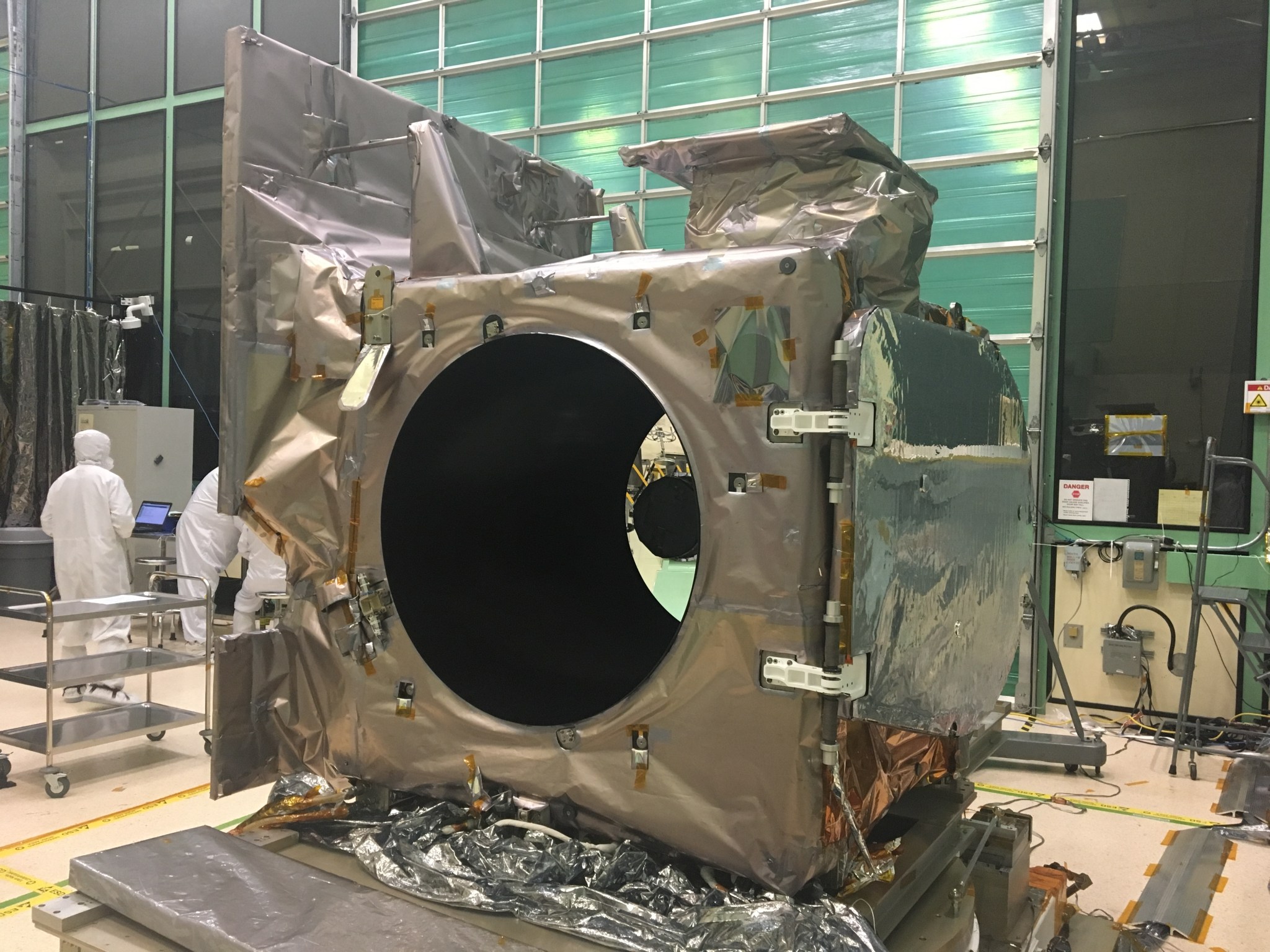Lasers that will fly on NASA’s Ice, Cloud and land Elevation Satellite-2, or ICESat-2, are about to be put to the test at the agency’s Goddard Space Flight Center in Greenbelt, Maryland.
They are a part of the sole ICESat-2 instrument — the Advanced Topographic Laser Altimeter System (ATLAS) — that will measure the elevation of ice sheets, sea ice and glaciers by sending fast-firing laser pulses to the surface and timing how long it takes individual photons to return. With a scheduled launch date of 2018, the instrument now faces several months of testing at Goddard in which engineers will ensure it is ready to operate in the harsh environment of space. This is an intermediate stage of ICESat-2’s testing regimen, and will focus on the flight lasers.
Credits: NASA/Ryan Fitzgibbons
Starting this fall, ATLAS will go into a test chamber at Goddard where engineers simulate the vacuum of space and can dial temperatures up to 122 degrees Fahrenheit or down to minus 22 degrees Fahrenheit (50 Celsius to minus 30 Celsius). Engineers will also turn on the two lasers — one primary and one backup — at different power levels to ensure they function correctly, said Anthony Martino, ATLAS instrument scientist at NASA Goddard. One test will include putting the instrument through its paces at different temperatures and taking pictures of the laser pulses to ensure they form a smooth, consistent circle, Martino said, with no rough edges, or dark or light spots.
“When it’s well behaved like that, it’s much easier to analyze the results that we’ll get,” he said. Other tests involve using mirrors to reflect the laser back into the detector portions of the instrument — but only after decreasing the strength of the beam of light by 13 orders of magnitude (about 10 trillion times), to simulate the weakening of the laser beam as it is scattered by the atmosphere, bounces off Earth and returns.
ATLAS went through an initial round of testing in the spring and summer of 2016 at Goddard as it was being assembled. The testing team jolted it on a vibration table and blasted it with sound to simulate a noisy rocket launch, then put it in a vacuum chamber and tested it in both extreme heat and extreme cold temperatures.
In October 2016, the instrument was wrapped up and put in a container that was trucked to the Orbital ATK facility in Gilbert, Arizona. Here, crews joined the instrument for the first time with ICESat-2’s spacecraft bus — the part of the instrument that provides navigation, power, commands and data collection — for more testing to test the connections and communication of the complete satellite.
“It was really exciting — it was the first time that the spacecraft had talked to the instrument,” said Donya Douglas-Bradshaw, ATLAS instrument project manager at NASA Goddard.
In Arizona, the team tested electrical and mechanical components of the observatory, performing maneuvers like opening the door that covers the instrument telescope for the first time in a vacuum. There were tests to tease out any problems now, while the hardware is on the ground and much easier to address, Douglas-Bradshaw said, both in regular clean rooms and in thermal vacuum chambers that simulate space conditions.
The months of testing at Orbital ATK went very well, Martino said. “We found that the instrument behaves the same way on the spacecraft as it did off the spacecraft — and that’s a good thing,” he said.
During the testing at Orbital ATK, the team used a spare laser and a mass simulator instead of the flight laser. The 2016 testing at Goddard uncovered a problem with the lasers in their original configuration — a mounting device within the laser itself was too tight and caused a crystal to fracture. So while testing was going on in Arizona, the flight lasers were being repaired and tested again separately.
Once the observatory testing was completed in Arizona, the team then separated the instrument and spacecraft, packed up the instrument and sent it back to Maryland and the Goddard clean room, where it arrived July 28. Now the team will verify the instrument’s post-shipping performance to ensure nothing was disrupted in transit, install the flight lasers, and the latest round of testing begins.
ATLAS is slated to return to Orbital ATK in early 2018, where the instrument and spacecraft bus will be reattached, and the complete observatory will undergo additional testing. ICESat-2’s launch is scheduled for September 2018 from Vandenberg Air Force Base, California.
For more information about ICESat-2 visit: www.nasa.gov/Icesat2
To download the video: http://svs.gsfc.nasa.gov/12663
By Kate Ramsayer
NASA’s Goddard Space Flight Center, Greenbelt, Md.























